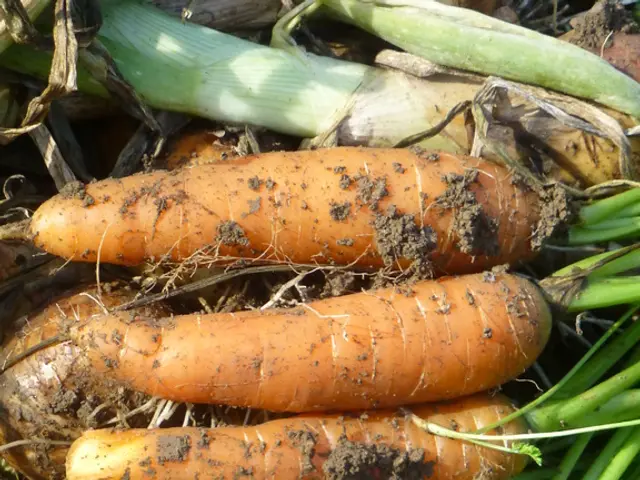4 Strategies for Eliminating Garlic Mustard Weeds from Your Garden Plot
Garlic Mustard: The Bane of Yards and Gardens
This pesky invader spreads like wildfire, crowding out native plants and wreaking havoc in various environments.
Ever heard of garlic mustard? Don't be fooled by its catchy names such as hedge garlic, poor man's mustard, garlicwort, or jack-in-the-hedge. This invasive weed, botanically known as Alliaria petiolata, is a major threat in numerous regions, known as an invasive species in some areas and a noxious weed in others. With a penchant for rapid expansion and intense competition, garlic mustard is not a plant you want taking over your garden. Here's how to keep this garden pest at bay.
The Unwanted Guest
Nicknames aside, garlic mustard's traits aren't particularly endearing. This non-native herb is notorious for its quick spread, forming dense stands that leave native vegetation gasping for space. It generally prefers moist, well-drained soil but is incredibly adaptable, found in a variety of soils and light conditions, ranging from full sun to full shade [1]. Additionally, garlic mustard is allelopathic, meaning its roots secrete chemicals that hinder the growth of nearby plants [2]. This results in the formation of monocultures, leading to problems in biodiversity and forest regeneration.
The Life Cycle of a Pesky Weed
One plant can produce over 7,000 seeds in its short lifetime, making it easy for garlic mustard to take over an area. Emerging earlier than many other plants, it shades out competing native plants, creating an uneven playing field in the race for nutrients and moisture. Once garlic mustard has its footing, watch out, for it's here to stay [2].
Identifying Garlic Mustard
This biennial plant presents with scalloped edges or round leaves during its first year, morphing into triangular or heart-shaped leaves with sharply toothed edges during its second year. Its distinctive garlicky smell and white spring flowers make identification relatively straightforward [1]. By early spring of the second year, garlic mustard has usually developed a white taproot with an S-shape near the top when dug up [3].
Controlling Garlic Mustard
As a biennial, garlic mustard only lives for two years, so taking action before it sets seed is crucial. Here are some effective methods for managing garlic mustard:
Manual Removal
The simplest method is likely the most effective: hand-pull plants, preferably after rain or when the soil is moist. Be sure to remove the entire tap root.
Prevent Seed Dispersal
Regularly cut or mow down plants before they set seed. This tactic should be repeated throughout the spring flowering season, as additional flowers may appear.
Herbicide Use
If hand-pulling and cutting prove insufficient, non-selective herbicides like glyphosate can be employed, applied on the foliage while avoiding overspray on other plants.
Beyond Short-Term Solutions
Even if existing plants are prevented from producing seed, there’s still an existing seed bank in the ground, with seeds remaining viable for up to five years. Regular monitoring for and removal of new seedlings is essential until the seed bank is depleted. To curb its propagation, community involvement and education are equally important.
Keep garlic mustard at bay by mastering these control methods, and say goodbye to this invasive unwelcome guest. Don't forget to alert others to the threat garlic mustard poses, so we can all work together to keep our yards and gardens flourishing.
[1] Invasive plant management: Garlic Mustard. (n.d.). https://www.nature.org/en-us/about-us/where-westates/threatened-species/invasive-plant-management/archives/2019/garlic-mustard.xml[2] Garlic Mustard (Alliaria petiolata). (n.d.). https://plants.usda.gov/plantguide/pdf/PG-287.pdf[3] Alliaria petiolata (Garlic Mustard) Management. (n.d.). https://www.twu.edu/ce/files/garlicmustard-ids.pdf[4] Controlling Garlic Mustard (Alliaria petiolata) In Forest Understories. (n.d.). https://invasive.org/westnorthcentral/factsheets/controlling-garlic-mustard-alliaria-petiolata-in-forest-understories[5] Garlic Mustard (Alliaria petiolata Desf.) - Control Options. (2020, October 28).** https://extension.oregonstate.edu/news/garlic-mustard-alliaria-petiolata-desf-control-options
Remember, garlic mustard is a notorious garden pest, often referred to as an invasive species or a noxious weed.Combating garland mustard requires a blend of gardening techniques and home-improvement solutions, as it can quickly crowd out native plants and wreak havoc in various environments.To maintain a healthy, diverse home-and-garden lifestyle, it's essential to address pest problem fixes like garlic mustard promptly, as underestimating its impact can lead to significant diseases weeds and bugs causing issues elsewhere.For further assistance, consult trusted sources such as the home-improvement and lifestyle resource 'BHG [Better Homes & Gardens]', which offers abundant information on gardening and pest problem fixes.








